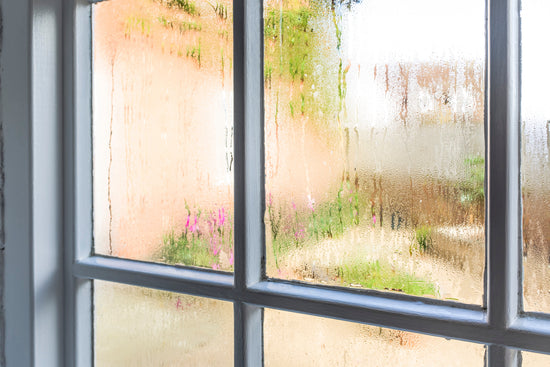Fire safety is one of those things that people tend to overlook – but it’s something you absolutely cannot risk neglecting!
According to the American Red Cross, the U.S. Fire Administration estimates that $280 million in property is destroyed each year as a result of children playing with fire.
As a result, it’s incredibly important for parents to educate their children about the dangers of fire, how to prevent fires at home, and what to do in the event that a fire does occur.
To help you get started, here are 5 tips on how to protect and educate your children about fire safety:
Family Fire Safety Tip #1: Prevent Your Children From Starting Fires
When teaching your children about fire safety, the best place to start is with how to prevent fires altogether.
While many fires are caused by things outside of your control, for the most part, they are avoidable. So it’s important to, firstly, take precautions including keeping all matches, lighters, and other ignitable sources out of your children’s reach.
If you do have lighters in your house, make sure they’re child-resistant. It could also be a good idea to use flameless candles if you have very young children in your home – this takes all the danger out of your child accidentally knocking over a flame-lit candle.
There are plenty of resources for parents to teach their children about the basics of fire safety and the dangers that can come with touching fire or fire sources. Check out Safe Kids Worldwide for a great list of resources!
Family Fire Safety Tip #2: Install and Test Smoke & CO Alarms
The best way to prevent a fire from spreading in your home is by installing working smoke and CO alarms!
Every home should have both smoke and carbon monoxide alarms – ideally, one on each level of your home (including basements), in every bedroom, and outside each sleeping area. If you already have smoke alarms installed, remember to test them once a month and change the batteries twice a year.
This also presents a great opportunity to teach your children about fire alarms and what to do if they go off. This will help children associate that sound with fire and help remind them what to do next (especially if you’re not home to help).

You might also want to install Notion sensors near your smoke alarms. In the event that you aren’t home, Notion will hear the sounding smoke alarm and send an alert to your phone so you can take action from wherever you are.
This can make date night much less stressful knowing that your kids and babysitter are safe!
Family Fire Safety Tip #3: Create a Home Fire Escape Plan
Creating a home fire escape plan is an absolute must!
Having a fire break out in your home can be overwhelming. So it’s important to be prepared in advance and have a plan for you and your family – from evacuation routes to emergency supply kits.
When creating your fire escape plan, it is important to walk through each room of the house with your family and determine which exits make sense for each room.

According to experts, it’s a good idea to plan at least two escape routes from each room. That way, if one exit becomes blocked in an emergency, the others will still be usable. Once you determine the exits, explain to your children which ones to use and in what scenarios.
A reminder for parents: keep the exits clear of toys and debris that could block someone from exiting the house. And make sure to keep your children’s doors closed. In the event of a fire, closing the doors will slow down the spread of smoke and flames.

Your family’s fire escape plan should also include a nearby meeting place outside of your home, like a library, community center, house of worship, family friend’s home, or something else entirely!
Whatever you choose, make sure that it’s a familiar place for everyone in your family – this is especially important for young children and family members with disabilities.
Finally, once your fire escape plan is complete, make sure to practice, practice, practice! It’s important to do this bi-annually so that your family is truly prepared in the event of an emergency.
Family Fire Safety Tip #4: Teach Your Kids Safety Tips
Kids are never too young to start learning about fire safety! At the very least, it’s important to teach them the basics so that they know how to prevent fires and what to do in the event that a fire breaks out.
For example, your children should know how to avoid smoke inhalation by staying low, to touch doors before opening them to determine if there’s a fire on the other side, and, of course, the “stop, drop, and roll” technique when your clothing catches fire.

Remember to remind your children (over and over!) about the dangers of fire in general and to avoid picking up lighters, matches, or other fire sources.
Finally, it goes without saying that you should never leave children unattended near any fire source and to teach young children to always stand three feet away from fire sources of any kind. This includes stovetops, space heaters, candles, and more.
When teaching your children about fire safety, it’s so important to remind them about best practices as it can be a lot of information to absorb. A great learning tip is to have them teach you what they know about fire safety so that you can fill in the gaps!
Family Fire Safety Tip #5: Familiarize Yourself With Safety Resources
There are so many things you can do to teach your children about fire safety and feel prepared in the event of an emergency.
With your children and family being your number one priority, it’s important to educate on best practices and safety precautions.

To help you teach your children about how to respect fire and what to do in the event of a fire, we’ve rounded up some great resources for parents:
- Sparky: Brought to you by the National Fire Protection Association (NFPA), Sparky the dog offers a ton of fun educational videos, games, and activities to teach children about fire safety.
- USFA Children: The United States Fire Association for children offers educational resources including an activity book for children and fire truck fold up activity sheets.
- Safe Kids Worldwide: The Safe Kids Worldwide organization offers resources for parents on how to keep them safe and how to prevent fires.
- Fire Safe Kids: The Burn Institute offers fire safety resources to make learning fun for kids. They have an interactive website that offers everything from games to coloring!
- American Red Cross: The American Red Cross offers a lot of great educational content for parents to help keep their children safe.
Thanks for reading! We hope that you learned a few new ways to keep your children and family safe in the event of an emergency.





